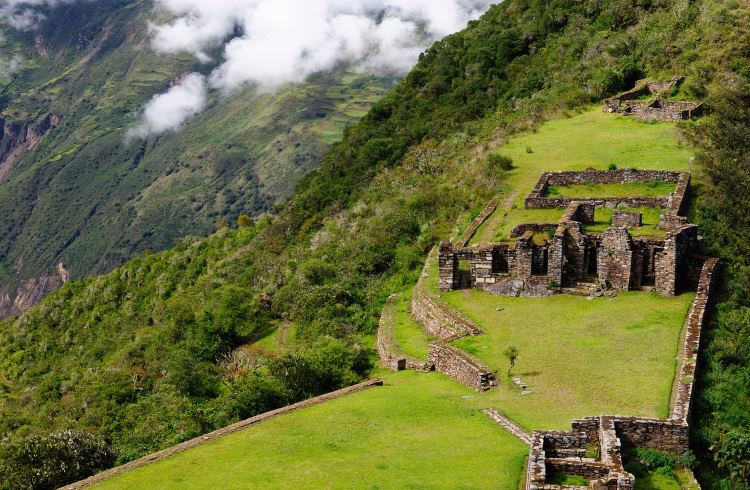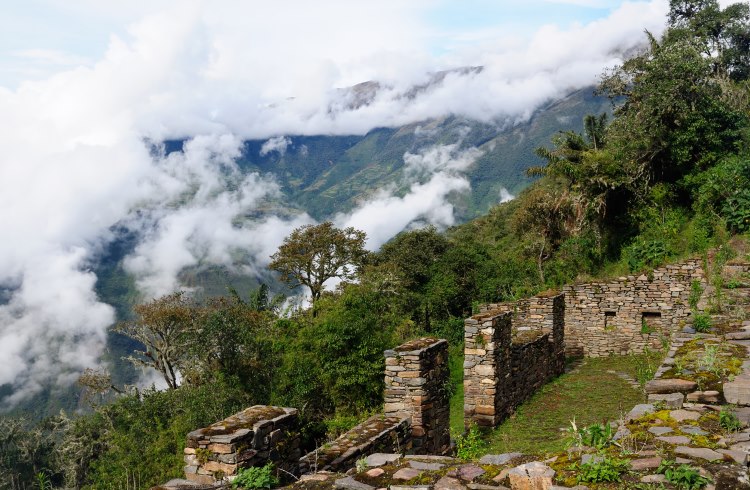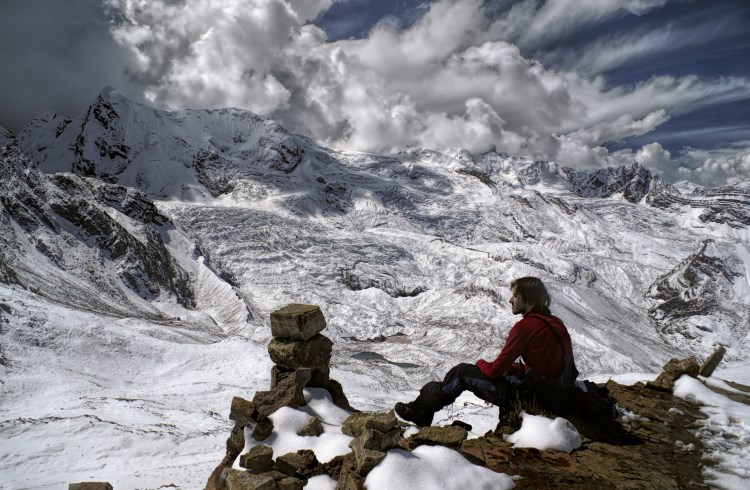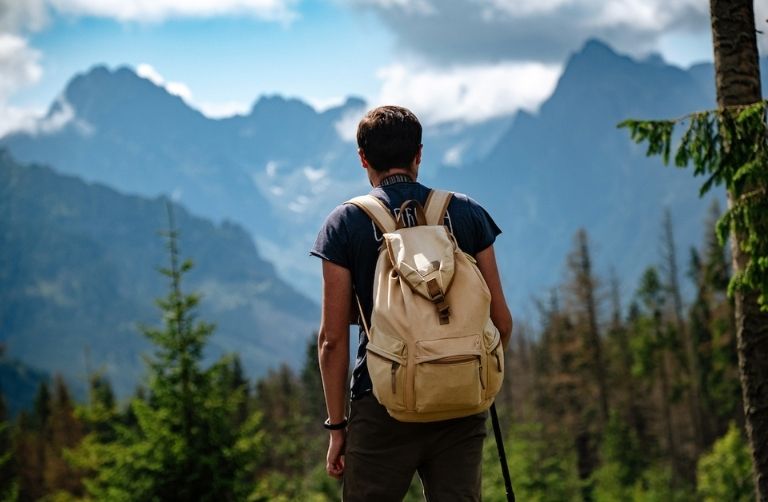Alternatives to the Inca Trail and Machu Picchu: Other Peru Treks
With permits limited on the iconic, well-trodden Inca Trail, these alternative routes to the treasures of the Andes are ever more appealing.
 Photo © Shutterstock/Rafal Cichawa
Photo © Shutterstock/Rafal Cichawa
- Practical tips for hiking to Machu Picchu
- Salkantay Trek to Machu Picchu
- Ancascocha Trail to Machu Picchu
- Classic Choquequirao Trail
- The Ausangate Trek and Vinicunca (Rainbow) Mountain
Peru's iconic Inca Trail, a fairly taxing 26-mile hike to the sacred Inca city of Machu Picchu, has been an adventure lover’s rite of passage since the site was first discovered in 1911. Around 25,000 visitors arrive each year via the Inca Trail, which cannot be hiked independently. A permit is required, and these are limited to 500 per day (including porters).
As more than 1.5 million travelers in total descend on Machu Picchu each year, and the site nudges ever closer to inclusion on UNESCO’s list of endangered Heritage Sites, more sustainable tourist initiatives have taken hold.
Below, we've suggested three equally scenic routes – some to Machu Picchu and some to other ancient sites – that offer trails strewn with Inca ruins amidst a flamboyant diversity of ecosystems, unsullied by massive crowds.
Practical tips for hiking to Machu Picchu
Besides the alternative routes to Machu Picchu listed here, many operators will customize their standard routes and offer treks that range from basic tents to more "glamping" style options.
Travelers with tight schedules and who like peace of mind should pre-book their itineraries. In very high season (June to September), tours quickly sell out and you’ll need to book your tickets for Machu Picchu several weeks in advance.
To avoid altitude sickness, plan to spend two or three days acclimatizing in Cusco before setting out. High elevations can also mean dramatic temperature spikes.
Salkantay Trek to Machu Picchu
The five-day Salkantay Trail, which connects Cusco to Machu Picchu, is the most popular alternative to the classic Inca Trail. The trail starts at the village of Mollepata, a few miles from Cusco, and negotiates 45mi (72.5km) of Andean peaks, cloud forest, and lowland jungle.
Widely considered to be a step up from the Inca Trail in terms of physical challenge, hikers must tackle the windswept, frigid Salkantay Pass at 14,760ft (4,500m).
The trade-off is huge: the chance to hike in relative solitude past awe-inspiring Salkantay Mountain (20,569 ft or 6,269m) and through valleys studded with ruins. A five-day tour with overnights in tents costs around S/. 2,215 or US $590.
For travelers that prefer more creature comforts, this hike provides the option of glamping in eco-domes or staying in high-end mountain lodges (with plush duvets, eggs over easy, and wine lists). But prices are high-end too, from S/. 3,000 to 13,140 (US $800 t0 $3,500).
No permits or guides are required for the Salkantay trek, but you’ll still need to purchase an entrance ticket to Machu Picchu (around S/. 150 or US $40), which your tour group will arrange. Independent hikers can organize permits for Machu Picchu in advance through the official Peruvian Ministry of Culture website.

Ancascocha Trail to Machu Picchu
Located within the Sacred Valley, the Ancascocha Trek to Machu Picchu yields similar scenery to the classic Inca Trail, but with little tourist traffic and the chance to explore recently excavated ruins en route.
Much more strenuous than the Inca Trail, this grueling, five-day, 34mi (55km) high-Andes trail involves ascending seven steep summits and negotiating rocky terrain at a dizzying 15,800ft (4,816m).
Your reward: a secluded hike through the pristine landscapes of the Vilcabamba and Urubamba mountain ranges.
On the final day, trekkers board the train to Aguas Calientes, the base camp for Machu Picchu. Tours begin in Cusco and drive to the starting point at Mollepata, three hours away. Prices for the tour range from around S/. 3,754 or US $1,000 (six to ten trekkers) to S/. 4,800 or US $1,280 (two trekkers).
Classic Choquequirao Trail
Nestled in cloud forest, some 61mi (98km) west of Cusco, the magnificent Inca citadel of Choquequirao is often called the "other Machu Picchu". With a maximum elevation of 10,000ft (3,048m), this trail is not a high-altitude head spinner compared to some other Andes treks. But it does feature some brutal ascents, rocky terrain, and a challenging hike deep into the Apurímac Canyon.
Your payoff is gorgeous scenery, Quechua villages steeped in mysticism, and ruins that are still being excavated – all without the need for a guide and the crowds of Machu Picchu.
Departing from Cachora (four hours from Cusco), the 4-5 day round trip hike to the ruins of Choquequirao with a guide starts at around S./ 2,627 or US $700 per person.

The Ausangate Trek and Vinicunca (Rainbow) Mountain
One of the most scenic and challenging hikes in Peru, the Ausangate Trek is also one of the highest-altitude treks in Peru.
Tour companies offer treks that range from three to seven days, but the most scenic treks involve, at a minimum, a five-day loop circuit from a starting altitude of 12,464ft (3,800m). From there, the trail ascends to over 17,060ft (5,200m) and negotiates three hair-raisingly high passes.
Proximity to Ausangate's snow-covered massif means temperatures plummet well below freezing at night.
Chances are you’ll encounter only a smattering of other hikers as you traverse snow-capped peaks, glaciers, high alpine lakes, and valleys full of alpacas and llamas – the Ausangate local community is one of the few shepherding communities left in the world.
As well as basic campsites, trekkers can sleep at one of four upscale lodges (tambos) or in basic huts. The Ausangate trek is also one of the few trails that allow horses. Most tours start in Cusco, where outfitters will drive three-and-a-half hours southeast to Tinqui. Prices range from around S/. 2,252 or US $600 (camping) to S/. 5,440 or US $1,450 (lodges).
Also available is a combined Vinicunca-Ausangate trek which showcases the much-photographed – and much-visited – Vinicunca (aka "Rainbow") mountain, with its naturally striated multi-colored hues.
If you opt to do a standalone trek to Vinicunca on a day trip from Cusco, be aware that it's a challenging hike with a maximum elevation of 16,470ft (5,020m). Don't attempt it unless you've properly acclimated beforehand, and be sure to wear good hiking shoes and be prepared for both cold and sun.

Related articles
Simple and flexible travel insurance
You can buy at home or while traveling, and claim online from anywhere in the world. With 150+ adventure activities covered and 24/7 emergency assistance.
Get a quote


No Comments